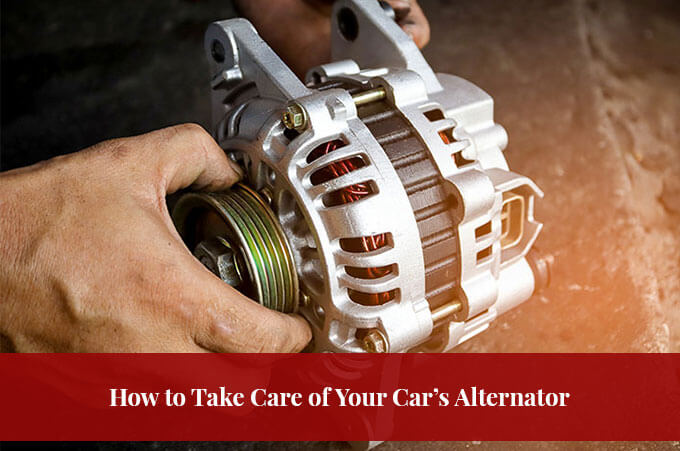
Keeping your alternator healthy and performing
🔋 Keeping Your Alternator Healthy and Performing at Its Best
Your alternator is the backbone of your vehicle’s electrical system. Whether you’re running a stock setup or a high-output unit powering heavy-duty accessories, taking care of your alternator is key to long-term performance and reliability. In this post, we’ll share practical tips to keep your alternator running strong for years to come.
🧠 Understand What the Alternator Does
Your alternator:
- Generates power to charge the battery and run electrical components
- Supports ignition, lighting, audio, fans, winches, and more
- Is in constant use while the engine runs—making it one of the most important (and overworked) components in your vehicle
Whether factory or high-output, proper care can greatly extend its lifespan.
✅ Tips to Keep Your Alternator in Top Shape
1. Keep the Belt in Check
The alternator is driven by a serpentine or V-belt. If the belt becomes loose, cracked, or worn, it can slip or fail—leading to reduced alternator output or total power loss.
What to do:
- Inspect the belt every 6–12 months
- Replace it if there are signs of wear, fraying, or squealing
- Ensure proper tension (especially after alternator installation)
2. Monitor Battery Health
A weak or failing battery puts extra strain on your alternator. If the battery can’t hold a charge, your alternator is forced to overwork to keep things powered.
What to do:
- Test battery voltage regularly (should be 12.4–12.7V when off, 13.8–14.8V when running)
- Replace old or damaged batteries
- Use a matched battery with high-output alternators for optimal performance
3. Avoid Overloading with Accessories
High-output alternators are made to handle more, but even they have limits. Overloading your system with massive audio amps, lighting, or aftermarket electronics without proper wiring or fusing can cause failure.
What to do:
- Calculate your total electrical load
- Use appropriate fuses, relays, and wiring gauges
- Upgrade your “Big 3” wiring (alternator to battery, battery to chassis, engine ground)
4. Keep It Cool and Clean
Alternators generate heat. Combined with under-hood temperatures, this can lead to wear if airflow is restricted or debris gets inside.
What to do:
- Keep engine bay clean and free of oil/dirt buildup
- Check that cooling vents on the alternator are unobstructed
- Avoid pressure-washing the alternator directly
5. Check Electrical Connections
Loose, corroded, or oxidized terminals can cause voltage drops, poor charging, and even burn out your alternator.
What to do:
- Inspect all terminals and power/ground cables
- Clean corrosion with a wire brush and use dielectric grease on connections
- Tighten everything securely (especially after installation)
🚫 What to Avoid
- Jump-starting improperly: Incorrect jump-starts can fry the voltage regulator or rectifier.
- Using cheap wiring kits: Undersized wiring can overheat and choke current flow.
- Ignoring warning signs: Dim lights, weak starts, or battery light indicators mean it’s time to check the system.
🛠 High-Output Alternator Care Tips
If you’re running a high-output alternator from HighOutputAlternator.com, take these extra steps:
- Use a deep-cycle or AGM battery for better current buffering
- Ensure idle output is strong—great for daily driving or off-road builds
- Always match wiring and fuse ratings to alternator amperage (e.g., 300A = 1/0 AWG wire)
🔧 Conclusion: Power Starts with Prevention
Taking a few minutes to maintain your alternator can prevent expensive breakdowns and electrical issues. Whether you’re powering a full audio build, heavy-duty truck accessories, or simply want rock-solid reliability—these tips will keep your system running at its peak.
🔋 Ready for an Upgrade?
If your alternator is showing signs of strain or you’re upgrading your build, check out our range of high-performance alternators built to go the distance.


